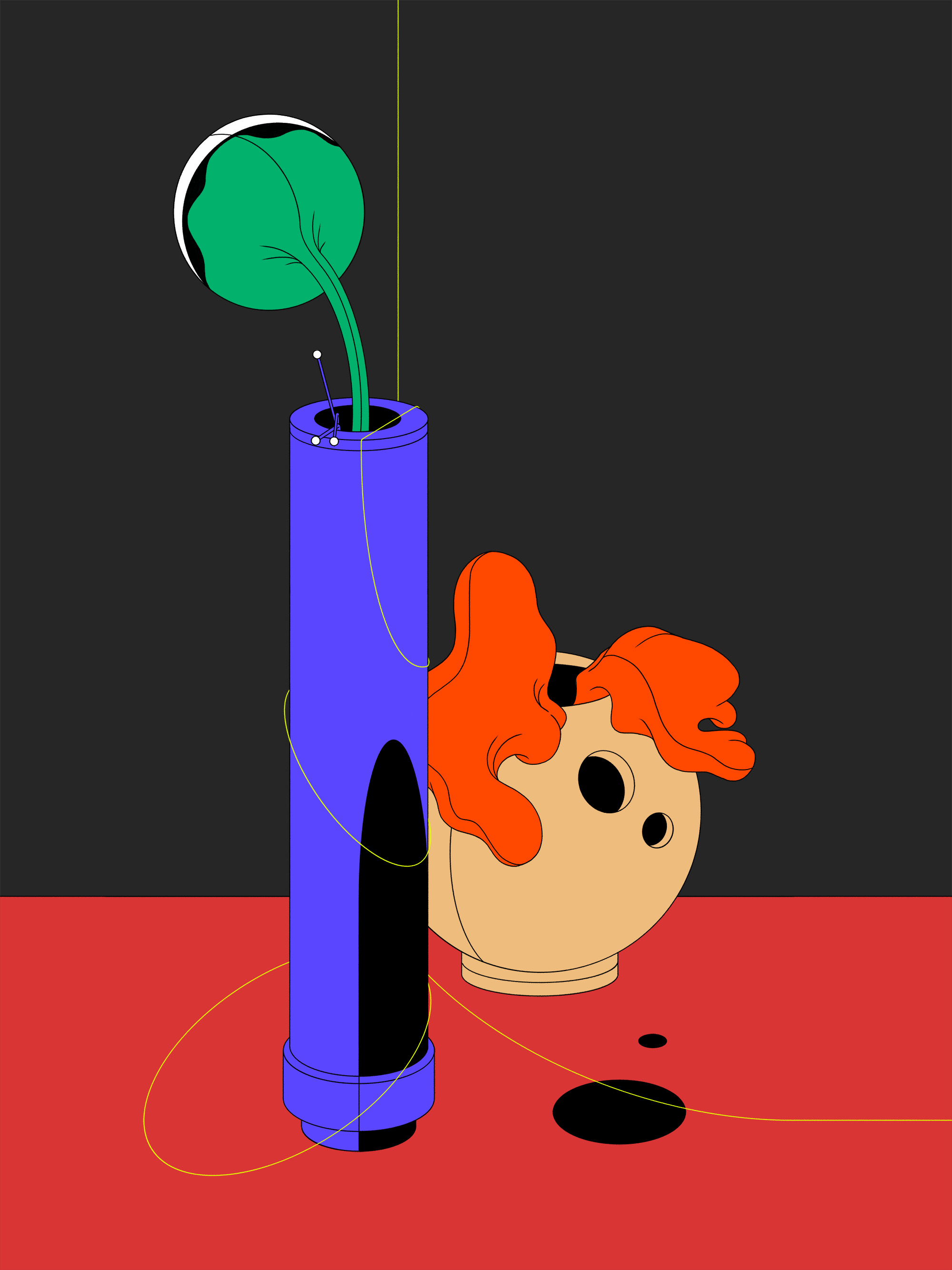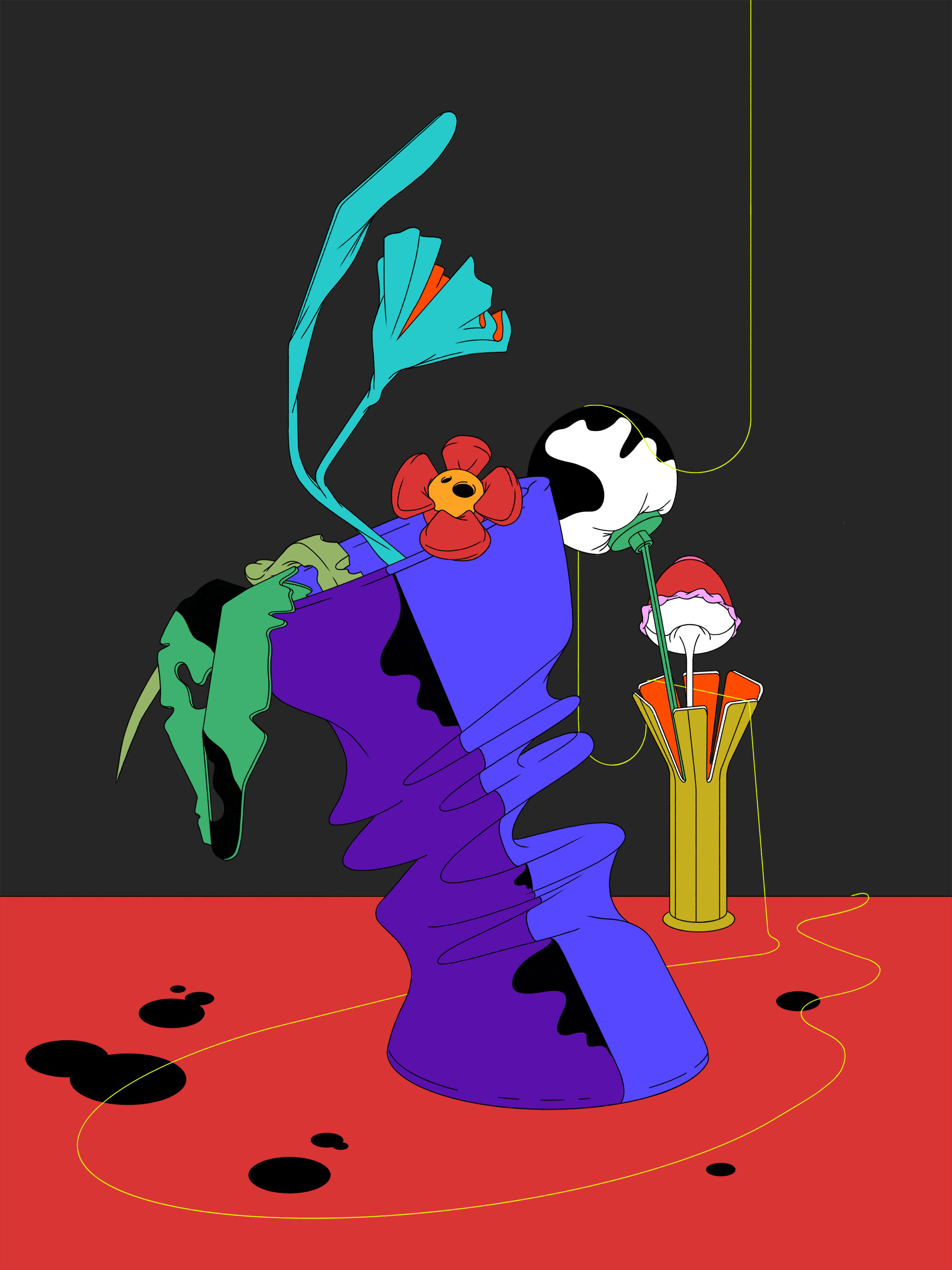Carolina Moscoso
Interview (2024)
First, could you tell us about your background and origins?I was born in the north of Portugal, in a small town. My family is of Portuguese origin, however, with some Brazilian heritage. As a kid I grew up with plenty access to the countryside, which greatly impacted the way I think and see. It was a pre-internet, pre-cellphone era, so the pace was definitely different. As early as I can remember I loved drawing and making things, and later noticed a growing interest in design. This determined my high school studies away from home and later led me to apply to architecture school. I trained in architecture in Lisbon, where I lived for twelve years, just before moving to NY in 2010, where I currently live and work as a full-time graphic artist.
Was art or creativity a part of your environment when you were a child? If there are any experiences or memories from that time that connect to your current sensibilities and approach to creation, please share them with us.In some ways, yes. Drawing was my number one hobby, I enjoyed my quiet time drawing a bit of everything. Early on, like many kids, I took it upon myself to decorate the furniture with hand drawn motifs, moving on to the bedroom wardrobe which I used as chalkboard frequently. The topics ranged from characters to fashion
Besides this, there are a few seemingly unrelated memories that I think are worth mentioning. One of them was that time when we
You studied architecture in Lisbon and gained experience as an architect. When and how did you develop a deep interest in architecture?I actually studied architecture away from home, in Lisbon, where I also worked as an architect for about two years. But, most of my experience as an architect was gained in New York, for some 10+ years. As a kid, I think I already had a mindset that pushed me towards design thinking and problem-solving. I was interested in the way imagined spaces or objects could come to life in physical form. There wasn’t for sure a specific moment when I knew, I just remember assuming it was a good course of things without overthinking it too much—architecture sort of fit the bill, in an idealistic way. I identified with that type of architectural character that draws and designs everything from knob to roof. It seemed limitless and [it was] the type of artistic mentality I understood and wanted to align with. However, looking back, I suspect that my love for stop motion had something to do with it as well: it perfectly embodies a sort of architectural fantasy, or at least creates a beautiful symbiosis between architectural spaces and the fantasy world of storytelling.
You moved to New York and started working as an illustrator. What led you to make such a significant career shift? Did you find something in illustration that you couldn’t express through architectural design?So, yes, the move to NY was art driven. I was at that point working as an architect in Lisbon for two years, barely started in my career, but I was feeling stuck and wanting to develop drawing skills and experience art education to some degree. SVA offered an interesting program of summer residencies, from which I selected Illustration and Visual Storytelling. And no less, as soon as I started it, I realized I needed it more than I ever knew. It opened up a new phase that was decisive in pursuing illustration professionally. It wouldn’t happen right away though—I still re-started my architecture career in NY, pursuing it for some 10+ years. In parallel, somewhat slowly, I continued to draw and explore ways to develop my visual vocabulary. Pursuing these two different fields created an interesting crossover of tools—while at work I started looking at graphic presentations as an opportunity to implement a personal style and make use of tools like AutoCAD to express that as much as possible. However technical AutoCAD might be, it creates an interesting work flow with its particular commands and mouse gestures. Its precision is as satisfying as I remember obsessing over perfect line weights in geometry class in high school. Eventually, many of these explorations became full illustrations asserting that impression that the two worlds were actually merging. During this time, I was getting more illustration projects on the side, working things up to a more recent moment when I felt it was difficult to pursue both for the lack of time and also motivation to advance in an architectural career. The decision was clear that I wanted to pursue graphic arts full time.
How has your career as an architect influenced and advantaged your current creative work?Practically, to work as an architect you have to build a rigorous work ethic, especially in NY where projects can be overwhelming, complex, with large teams and long work hours. You work under a great deal of stress and still have to deliver good creative work. Having that experience gave me a decent notion of methodic workflow that helps with overcoming the initial creative overload when responding to an illustration assignment.
Conceptually—while I work, I am still entering the drawing in that capacity of designer, knowing that there are elements that are manipulated with a problem-solving drive, knowing that “how things work” logic that presses a certain formality of structure, resolving relationships to context and other parts.
Your style is characterized by intricate line work, bold use of color, graphical expressions, somewhat strange arrangements, and a surreal atmosphere. The precise lines suggest your background as an architect, but what kind of experiments did you go through to develop your unique style by combining these distinctive features?Looking at it from a safe distance, I think I’ve always searched for familiarity in architectural representations. I was captivated by the domesticity of architectural spaces and how their representation can be transgressed into something more fictional and poetic, via the most ordinary things. Early on, my approach was more naïve and analog, isolating studies of figures or objects. With time, I started adapting these to that architectural language, clear in style, focusing mostly on subject matter. This transition dismantled the order of things in a way: layers of reality vs. fiction being overlapped challenged new relationships and patterns within the concept of space. Once in this narrative, I grew more and more curious about the theatrical and the staging of those mundane references, experimenting with displaced spaces and foreign objects. There are parallel processes that contribute to this fabrication of visual vocabulary. In the broader scheme of things, observation and photography, are two important motions—there is poetic potential in everything if you look closely.



Boudoir
House F
House G
In your private works, there are many pieces depicting rooms or corners of private spaces. When you use such spaces as subjects, do you first conceive a story or background for the inhabitants of those spaces?It’s actually quite the opposite. What interests me in this process is starting from a smaller scale isolated from the bigger picture and roaming further into the construction of the space. I might have an idea of some elements to include, something that I might be curious to draw and that might help kickoff the illustration, but it’s never strict. There is no predefined story, it unfolds as a thread of smaller happenings.



 Three Lamps
Three Lamps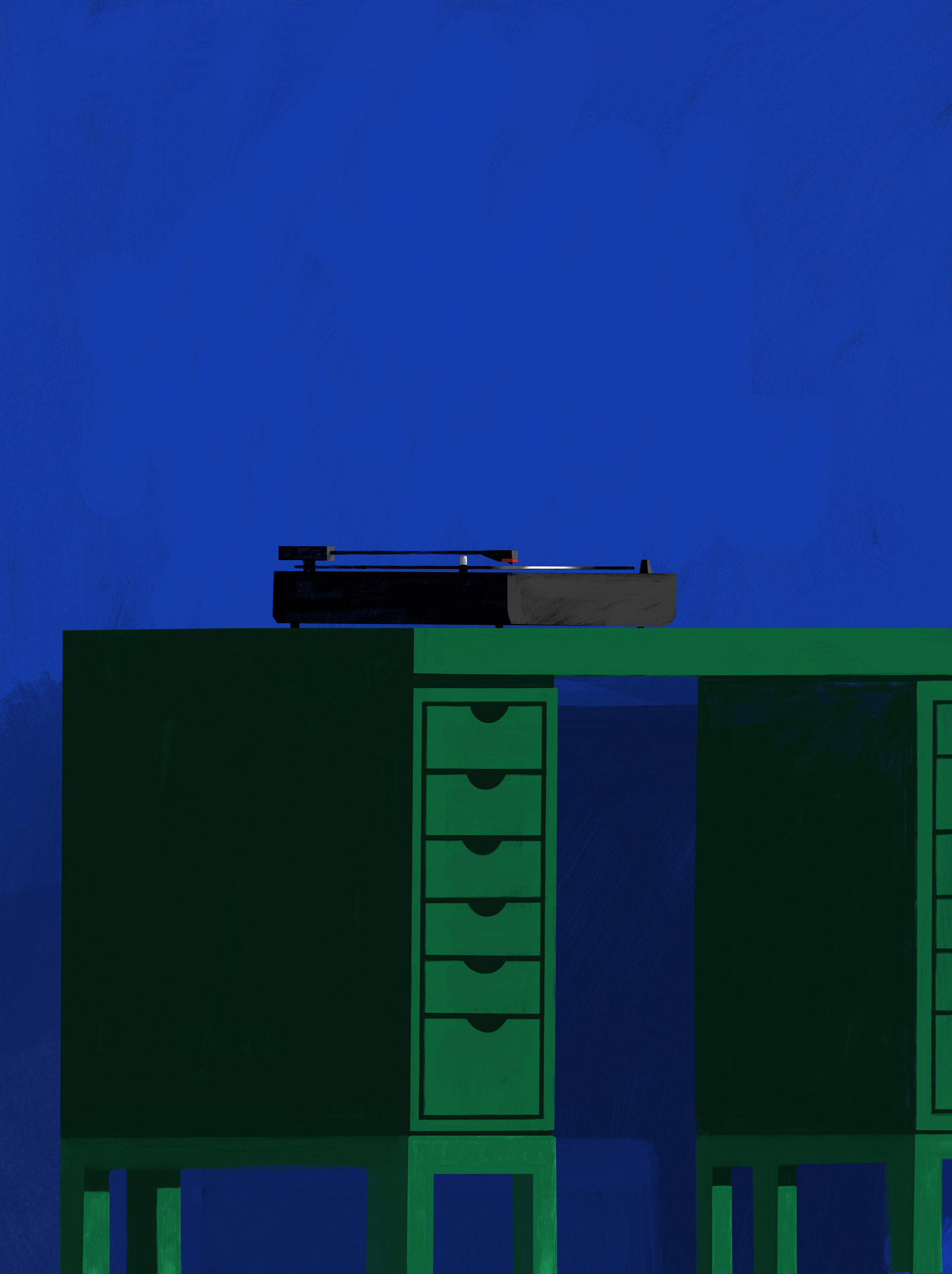 The Man Who Took My Sunglasses
The Man Who Took My Sunglasses
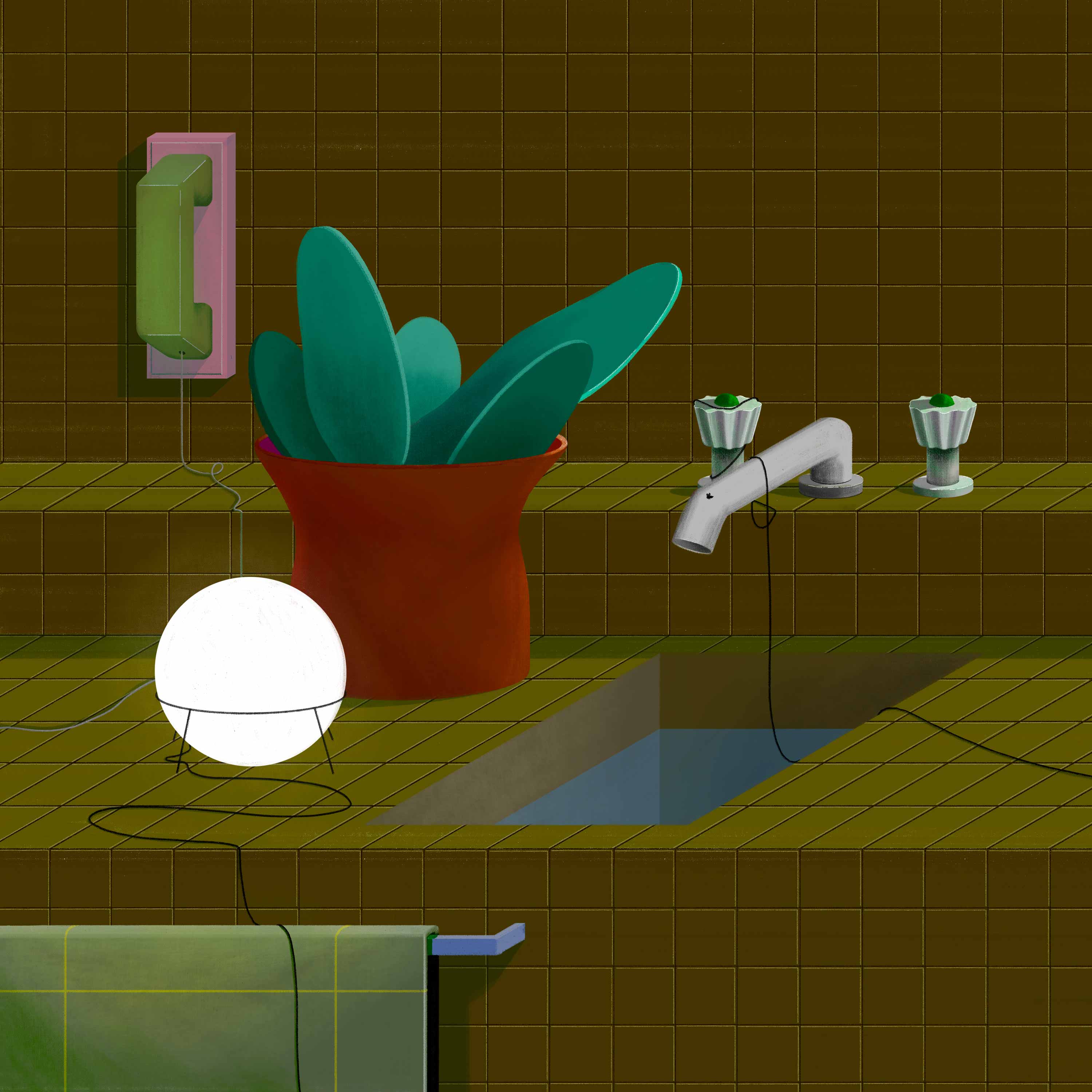

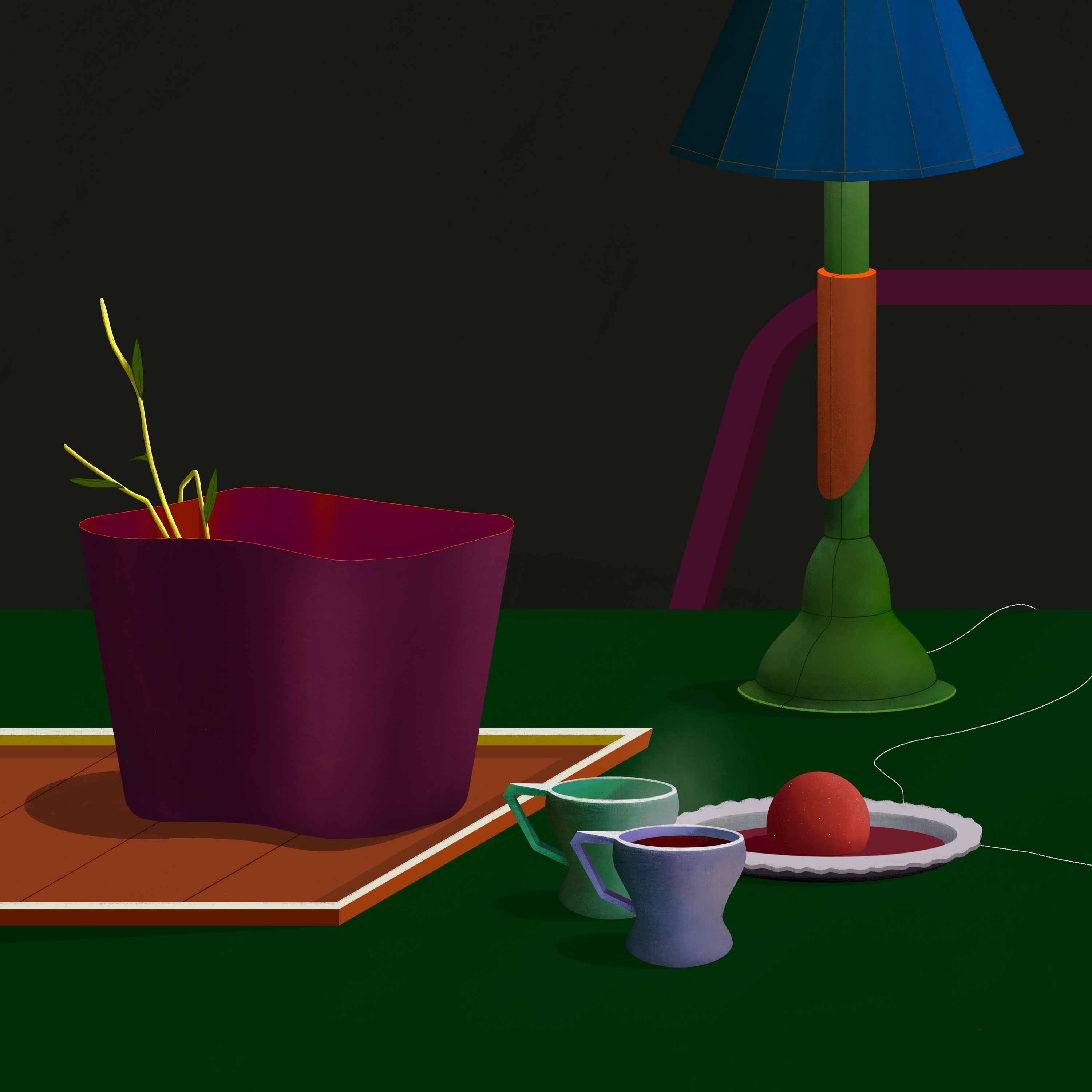
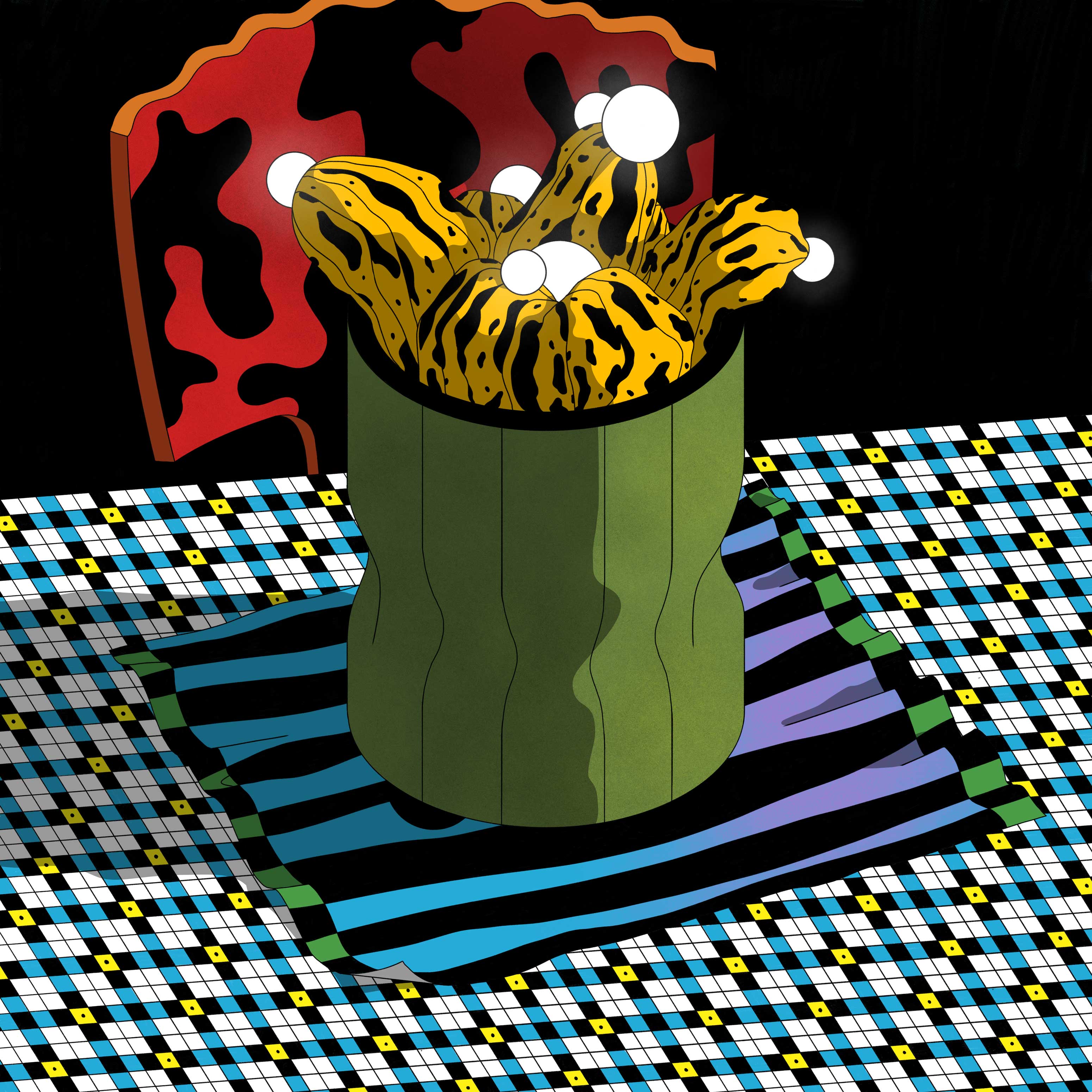
In your works depicting interiors, ornamental foliage plants frequently appear. The shapes and colors of plants are very organic, seemingly in contrast to the precise lines and curves of architectural design. What commonalities do you see between them?I am fascinated by the natural world and its structures and colors. This is a direct reflection of that. When I juxtapose the rigid and organic, I am looking for movement, or a melodic balance if you will. I think there is some poetry in that posture.
In Hypothetical Plants series, unlike previous works that mixed various elements, features imaginary plants depicted individually against a monochromatic background, as the name suggests. By eliminating other elements and focusing solely on the plants, what different aspect were you aiming to express? Also, is there any connection to Tea for Ten, which you presented last year?Hypothetical Plants was born from an old project that evolved over time: it was originally a combination of experimental 3D vases in Rhino with 2D AutoCAD plants. With time I became more interested in the plants alone and their potential to morph into strange objects. Eventually there was this project called Tea for Ten
Do each of the plants featured in Hypothetical Plants have specific characteristics, backgrounds, and names? Or do you primarily focus on the visual image that comes to mind when creating them?The focus is more visual for sure. Although, they seem to come alive with movement sometimes. I address them as plant-objects, and in the back of my mind they are linked to an old fantasy of creating lamps. Sometimes, the story with this automatic drawing exercise is also a response to music. For example, right now I am listening to YMO, so if I were drawing a plant-object, it would be somehow connected to it. The association of music to the process videos on Instagram was a fun way of to play with that, they resonate with some sort of choreography.
You can appreciate the association of music to the process videos at the link above.
How do you envision the Hypothetical Plants series evolving in the future?I like that it is just an ongoing exercise. If I continue to create one every day, that will be enough. The idea is to experiment with limitations, it’s an exercise of self-discovery. If, at some point, there is a group of these objects that is meaningful as a whole, I would consider the lamp idea.
In your pursuit of self-expression and creation, what significance do you see in returning to your true self and the essence of your work?I try to see it with a “less is more” mindset. Meaning, you are the work and there is a limited set of traits that define you as a person—you occupy a unique but not infinite universe of interests and curiosities. That’s your toolbox and there is something humbling about accepting that—it’s honest if it comes from a place of self-discovery. Returning to that stage opens up a dialogue with the work in which you are resolving your identity as well as the work itself.
In your work and creative process, what challenges do you face when expressing your raw self, free from others’ expectations and societal norms?I have a tendency for perfectionism. A personal battle is to overcome the fear of messing-up and accepting mistakes more gently. I know they are an important part of the process and sometimes beautiful work, too.
During the process of creating your work, do you consider the transformation and development of yourself and identity? How does this impact your work?I will often go to these places of confrontation, pondering how much the work is influenced by who I’ve become and vice-versa. I take this as constructive analysis and personal challenge to push the work forward. It’s something personal, not a response to external pressures. Personal identity and work identity go hand-in-hand, you can’t escape that. I visualize it as an ever-evolving structure/frame of existence in which work elements are generated from hidden links, gradually falling into place.
When you immerse yourself in creation and become completely “raw" to yourself, what state are you in, and what do you think and feel?I tend to dissociate a bit, which I think is an immediate response to overthinking. I feel more in tune with the drawing if I am locked into an absent mode, often adding something in parallel like music, to help with that gap, so thoughts and drawing can merge in a more organic/intuitive way.
Finally, could you tell us about your current projects and what you hope to achieve and challenge in the future?I am currently interested in more complex compositions, slow cooked drawings, if you will, and revisiting more analog work, which has been dormant for a while.
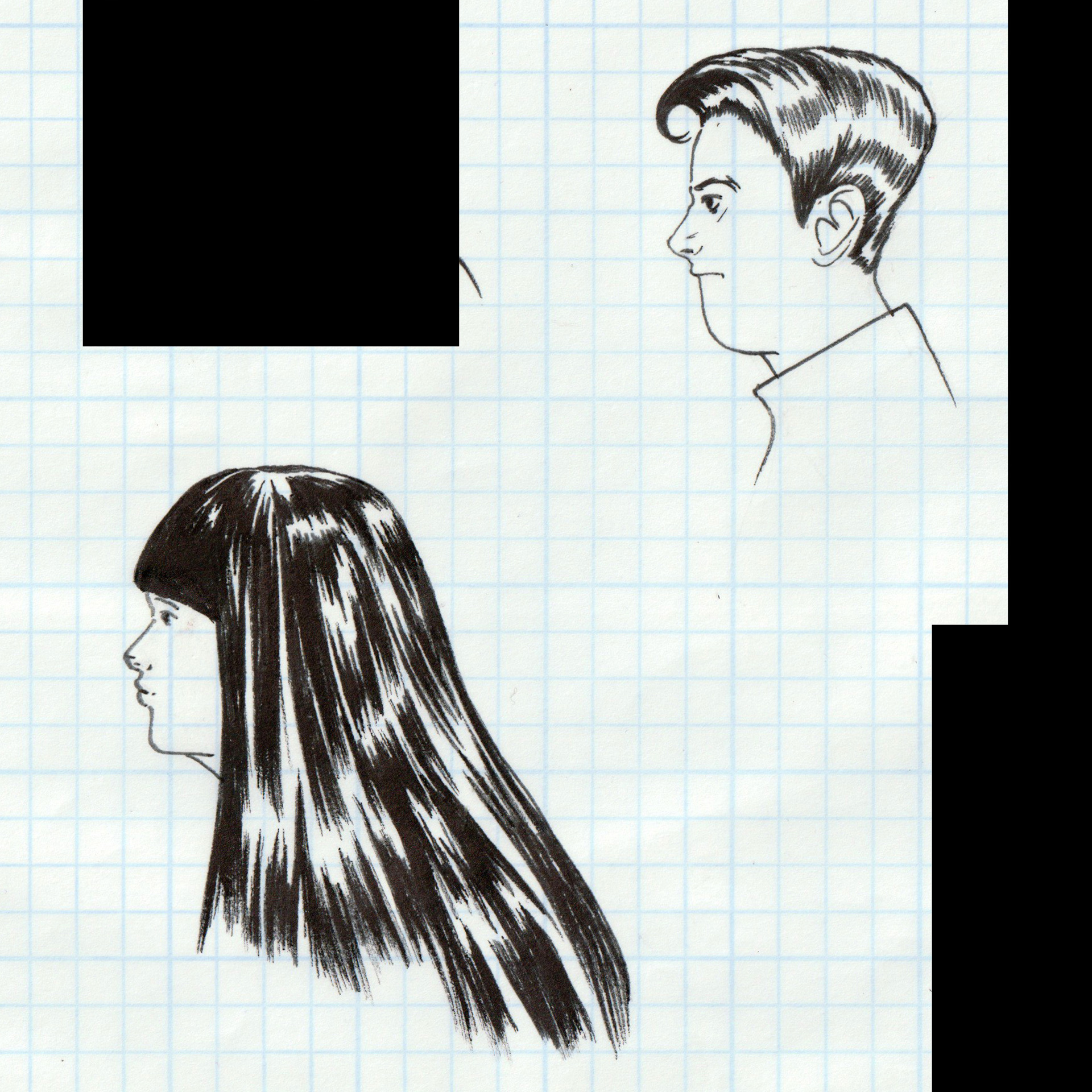









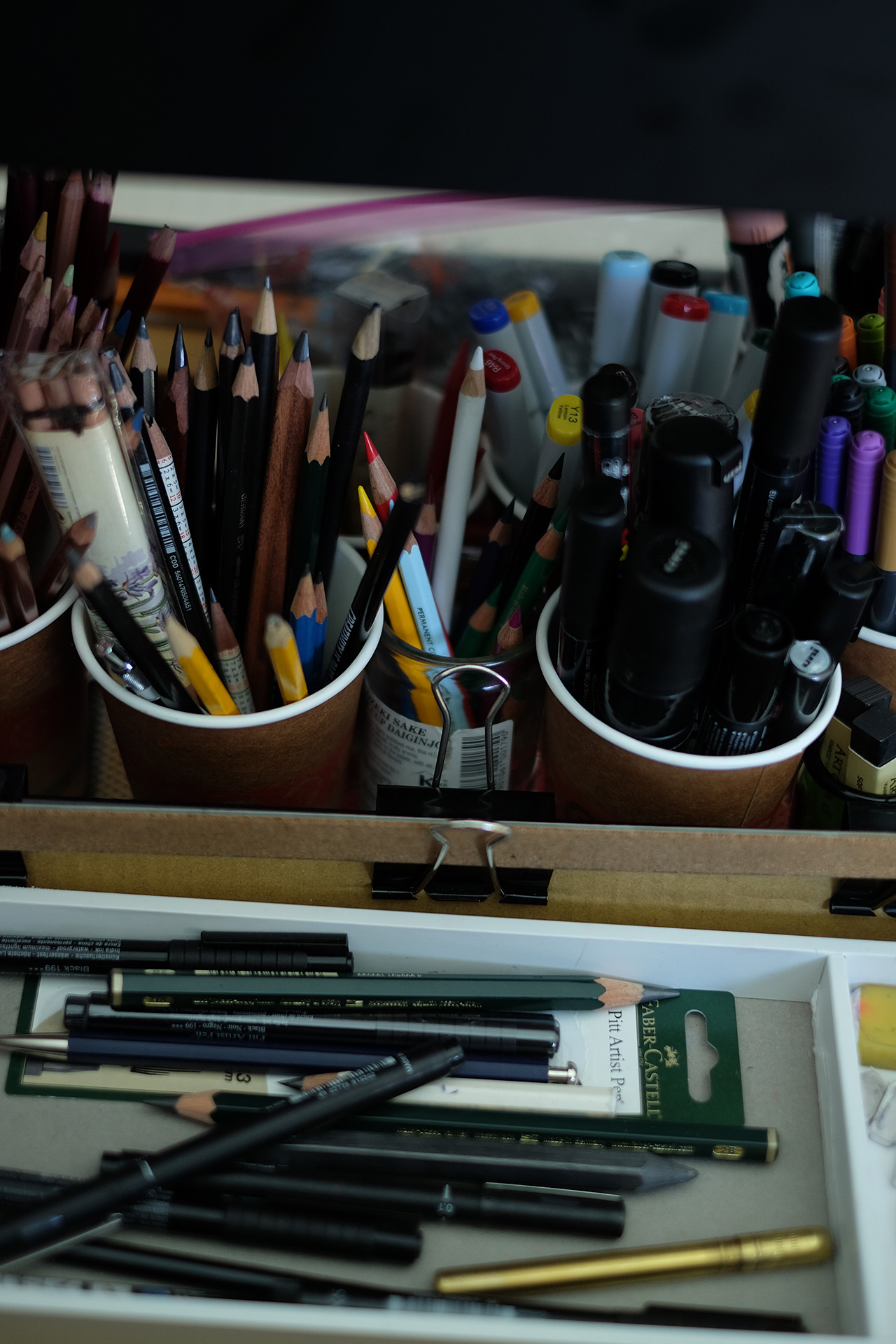

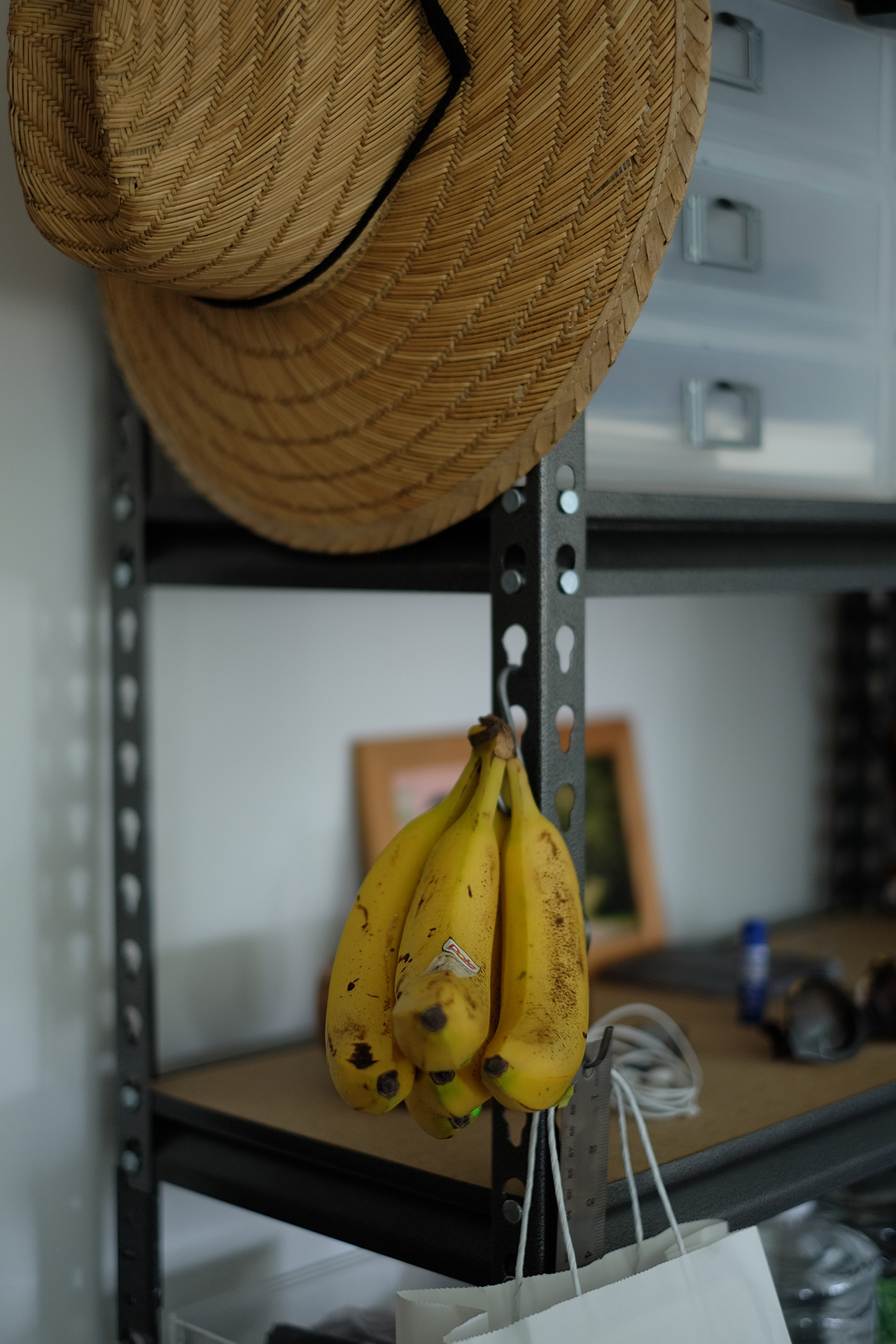

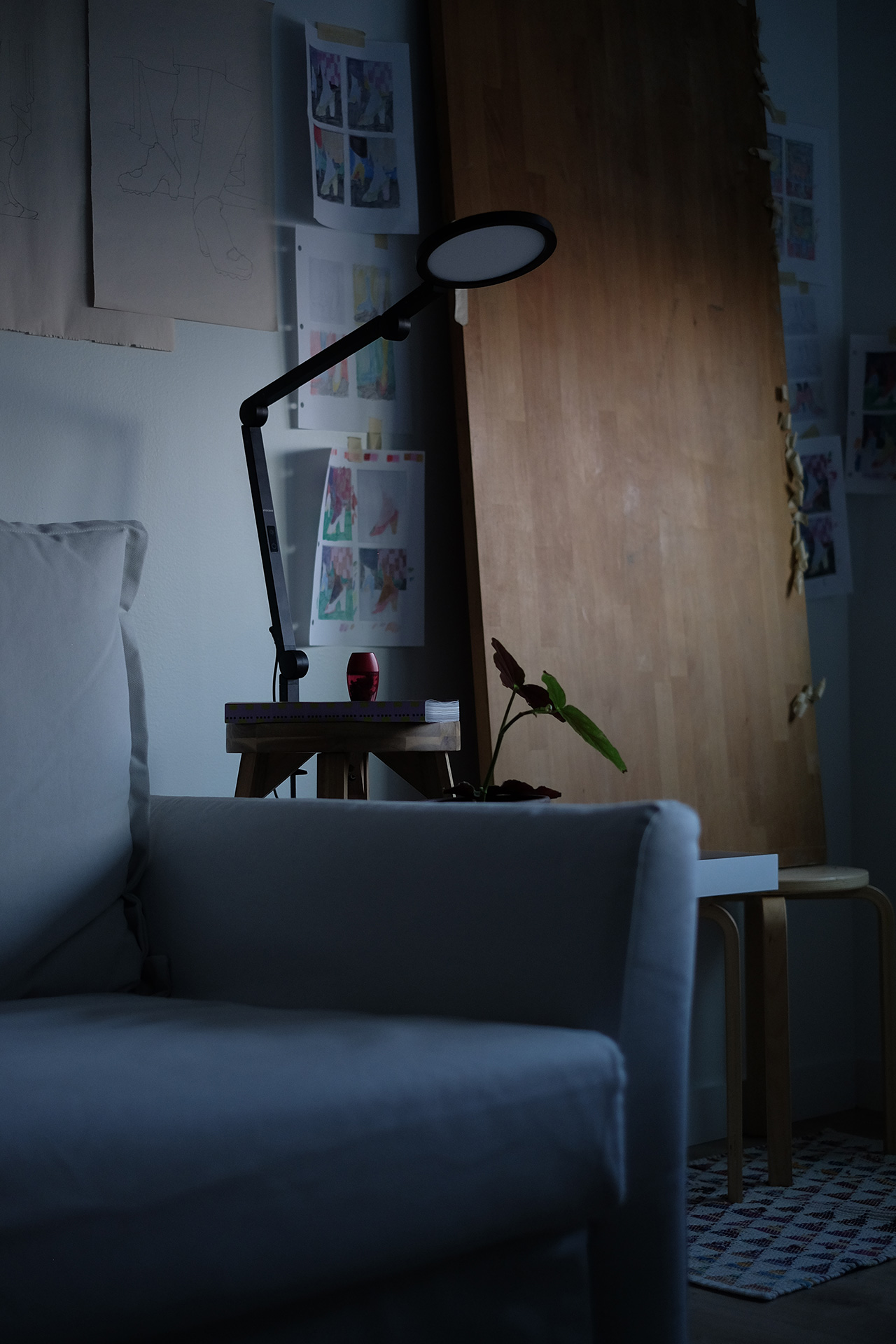








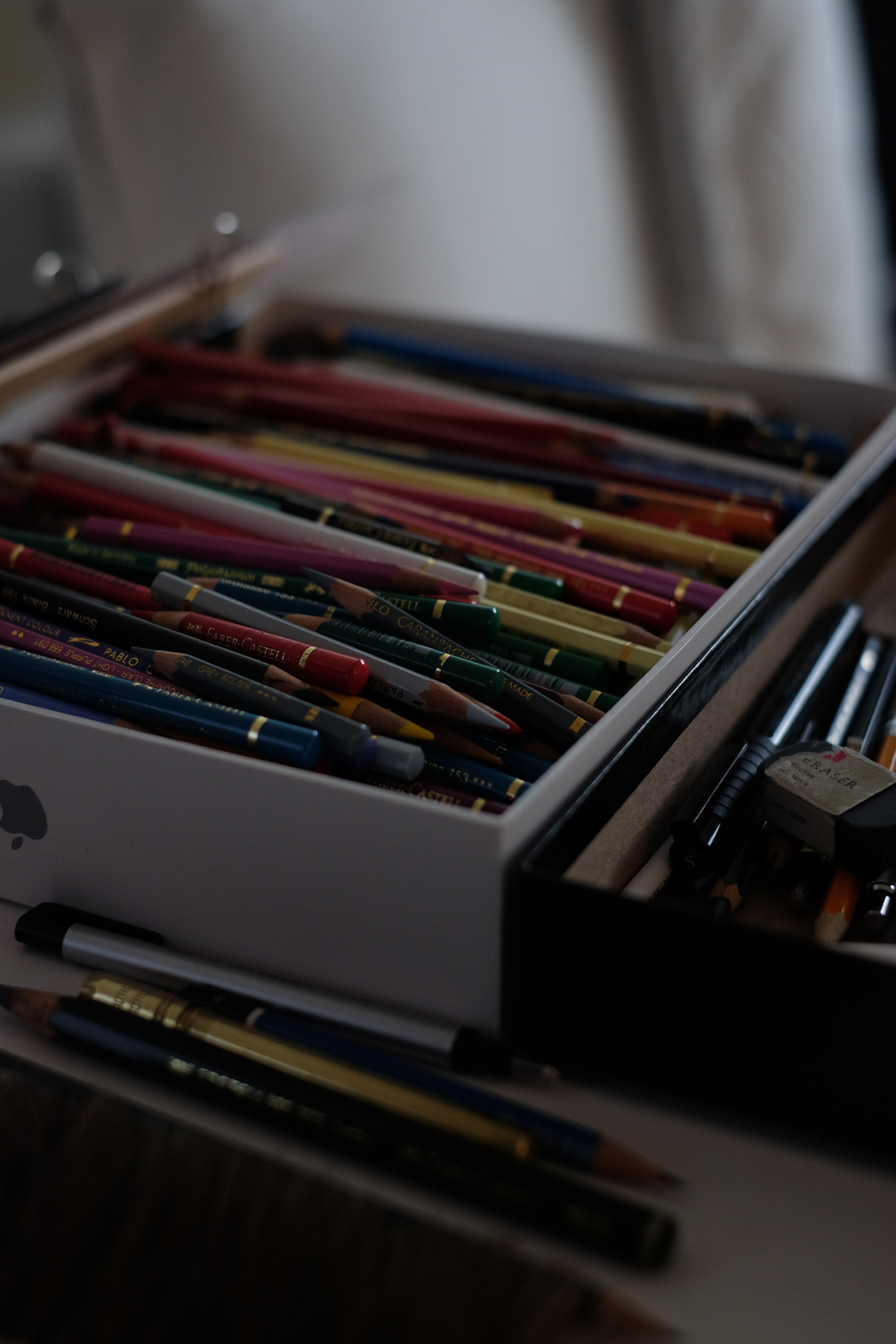
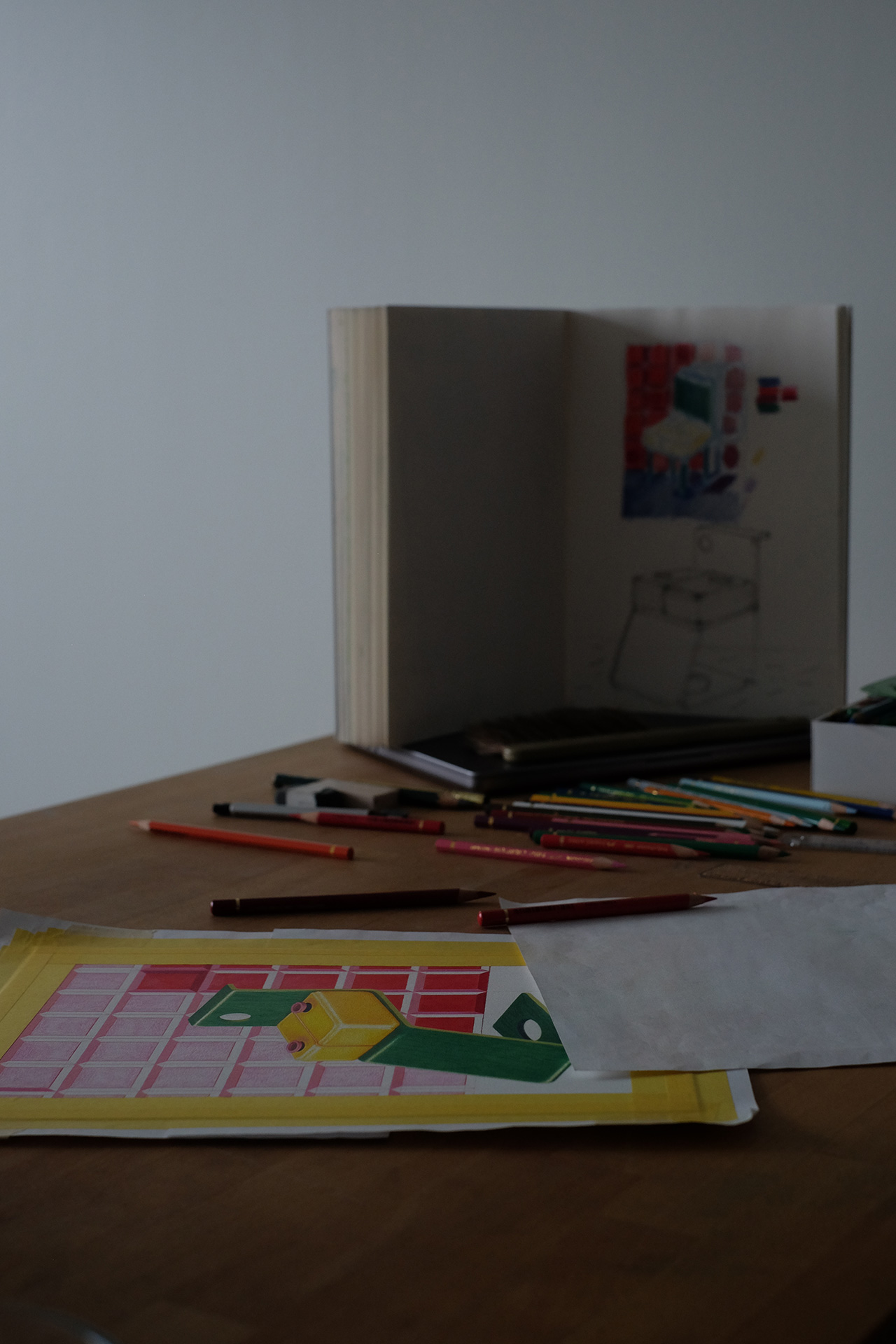
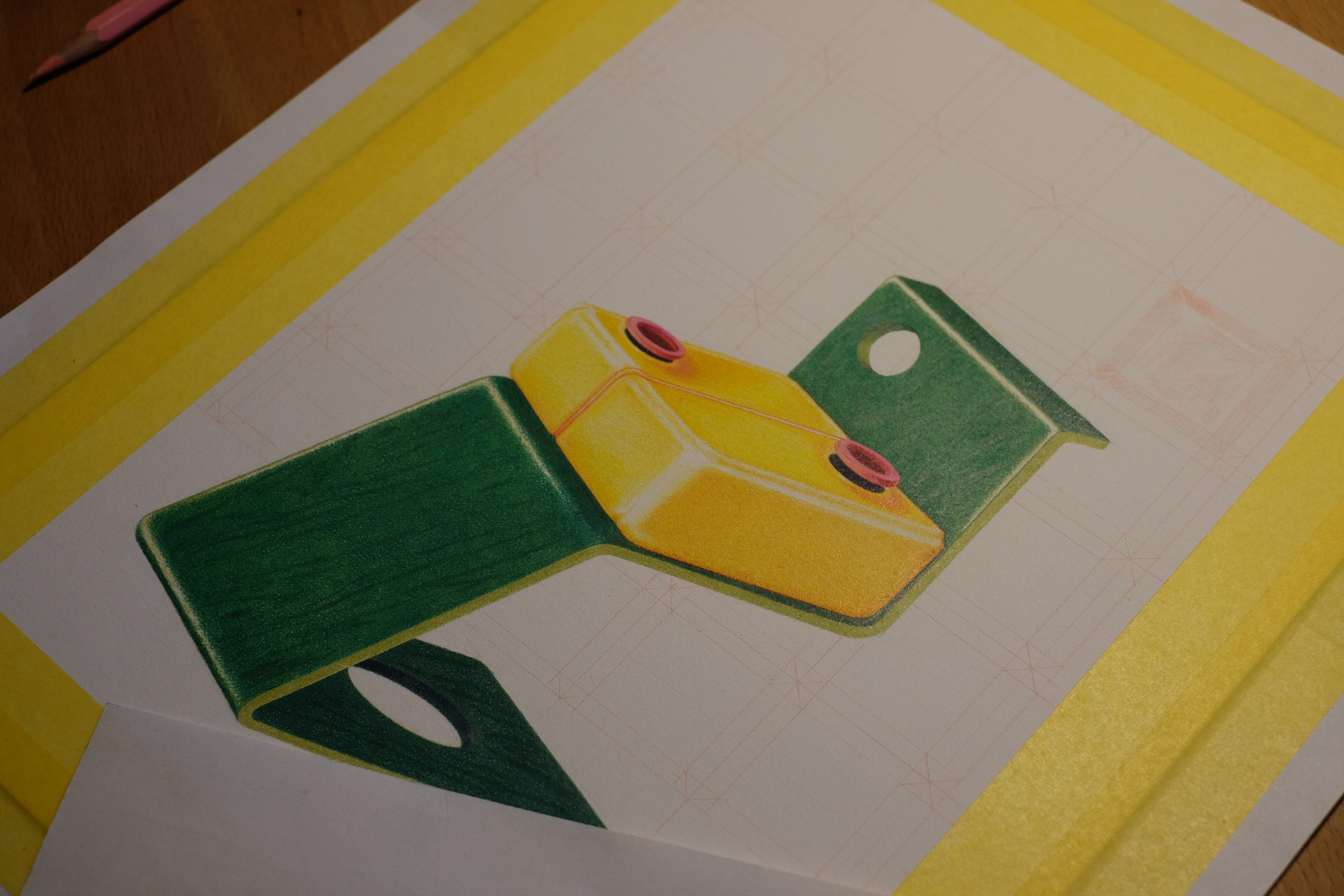
All images ©Carolina Moscoso

